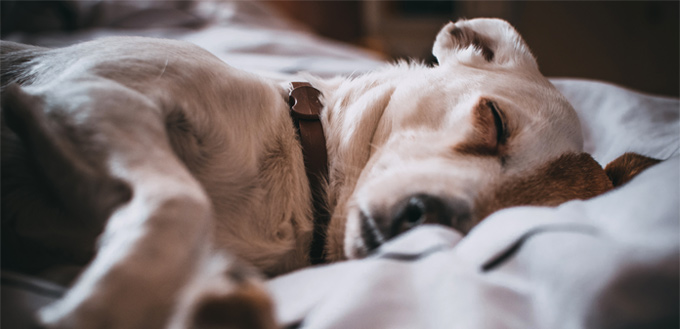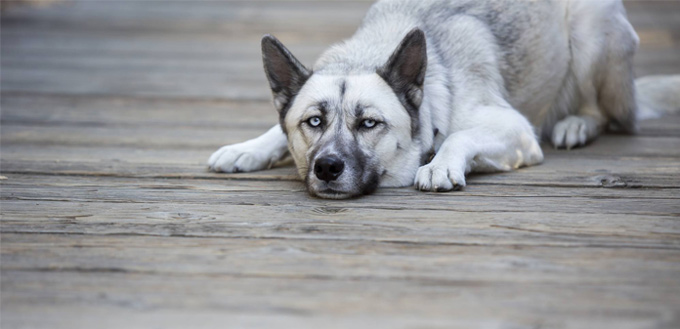Have you ever heard of a dog running around in its sleep? It is not a joke testing your sense of humour or a riddle meant to test your depth of knowledge, but a reality check confirming that sleep walking is indeed prevalent among animals too.
Sleep walking is a disorder which is usually associated with human beings. People who suffer from this condition walk about in their sleep without realizing it. This disorder occurs when a person transits from deep sleep to lighter sleep or is about to awaken.

A sleep walker does not respond to anything at this stage and is unable to recall anything that might have occurred during this time-span. Apart from human beings, this disorder also affects animals, although its manifestation is rare.
What is Sleepwalking?
Also known as somnambulism, sleepwalking is a disorder that happens during deep sleep. It includes activities or movements such as walking, which can only happen when you are awake. While you are asleep, both your conscious and subconscious mind are at rest along with your physical body and all movement is suspended for a while besides muscle relaxation.
However, in some, this function gets twisted and it results in sleepwalking. Children are more susceptible to this sleep disorder than adults. Activities during sleepwalking are usually not normal, for instance, climbing out of the window and falling down, moving around the house or even eating something from your refrigerator.
Sleepwalking in Dogs
So, does your dog sleepwalk? The answer is, yes, dogs do sleepwalk but, not like humans. A person sleepwalking is difficult to decipher because his movements seem to be as normal as they would be when he is awake.
In dogs, the disorder is characterised by random, jerky movements while sleeping. For instance, they behave as if they might be running or stagger a few feet before falling to the ground. A dog would often growl, twitch, whimper or move its feet while sleepwalking and some dogs even breathe rapidly as though panting on being chased.
Is Your Dog Sleepwalking Or Is It Experiencing Seizure Or Dreaming?
You need to find out first, what could be the possible reason for this strange behaviour of your dog while it is sleeping. Is it suffering from some form of sleep disorder or is it dreaming? Seizures could also be a possible reason for dogs to exhibit strange behaviour.
There is a thin line that separates sleepwalking from dreaming in dogs. When a dog dreams, it exhibits similar behaviour to that of sleepwalking. Even though there is no scientific assurance that a dog dreams, still its behavioural pattern is indicative of the fact that it does dream.
Why Do Dogs Sleepwalk?
Although the reasons for sleepwalking are not so evident, lack of sleep and ageing could be few of the possibilities.
Lack of sleep often induces sleeping disorders, such as narcolepsy or cataplexy. Whether or not sleepwalking is induced due to sleep deprivation is not clear. In dogs, there is a sleep disorder called REM. Research has revealed that dogs dream during their rapid eye movement (REM) stage of sleep, like human beings. Normally the muscles are paralysed during dream sleep. When this does not happen, dogs may act out their dreams like human beings.
Dogs that suffer from REM sleep disorder have been known to bark, howl, chew, bite or often experience episodes of violent limb movement in their sleep. These symptoms resemble sleepwalking. A middle-aged dog is said to suffer from sleep disorders more as compared to a younger one. Senility could be one probable reason for your dog to move around the house at night, and it differs from sleepwalking.
Symptoms of Sleepwalking in Dogs
Pet owners often complain of their dogs sniffing around the house at night, wherein it neither reacts to lights being switched on nor to anyone coming into the room. A gentle coaxing can bring the dog back to its doggy bed and it becomes normal the next morning.
You may wonder if this is called sleepwalking in dogs. Experts opine that this kind of behaviour has nothing to do with sleepwalking. Unlike humans, dogs do not move around while sleepwalking. They are more likely to engage in fitful movements, like paddling their feet as if running.
A dog moving around in a trance is often associated with signs of ageing. It might be a result of some cognitive or mental disorder. Therefore, if you observe your dog doing the same, do not associate it with symptoms of sleepwalking. It could be a possible symptom of some other kind of sleep disorder like senility, narcolepsy or cataplexy. Dog owners need to closely monitor their pet to find out the underlying cause of their sleep disorder. You might find dog activity monitors useful for this purpose.
You may also like our article on the Best Pet Bed.
Seizures and Sleepwalking
Seizures in dogs are often mistaken for sleepwalking. For instance, while in seizure, a dog usually becomes disoriented, paddles its feet, drools, twitches and moves in circles. It might bump into objects too. Likewise, sleepwalking comprises of convulsive movements and apart from certain behavioural disorders like running, chasing or staggering, there is no other significant activity.
Treatment for Sleepwalking
Dogs that tend to sleepwalk are at a high risk of injuring themselves. Therefore, if your dog is exhibiting symptoms of sleepwalking, do not delay in consulting your vet.
It has been proven that a proper diet helps a lot in fighting sleep disorders in canines. An Omega 3 enriched diet replete with essential fatty acids will help your dog overcome its sleep disorder. On being given foods that contain supplements like mixed tocopherols, flavonoids, Omega 3 fatty acids and so on, dogs show remarkable improvement in getting over their sleep disorders. Your vet might suggest organic food for your pup.
Waking up a sleepwalking dog could be dangerous – it might get startled and attack. Therefore, if you feel that your dog is sleepwalking, let it continue. You can try to cajole it back to its bed. If you fail in your first attempt, do not push and let your dog take its own time to settle down.
However, you need to consult your vet to find out the root cause of this abnormal behaviour as it could be indicative of a serious problem. You could even subject your pet to a neurological examination.
Check out our review of Organic Dog Food.

Final Word
A sleepwalking dog might be a delight to watch. That being said, as your canine cannot express its ailment, you need to be extra careful to ensure its wellbeing. Sleepwalking symptoms are not easy to decipher and pet owners often confuse them with those of seizure. If your dog is suffering from seizures, immediate veterinarian consultation is recommended.
Moreover, do not take sleepwalking lightly either. Your dog might injure itself in the process. To ensure better sleep for your canine, get it examined and treated before the situation goes out of hand.
Sources:
- Dr. Jerry Klein, CVO, Let Sleeping Dogs Lie: Seizures and Dreams, The American Kennel Club









Hello I am Cooper and I am a student in grade 5,
I am doing a project for my school
I have a dog that sleepwalks in the middle of the night waking me and my family up.
Can you please suggest what I can do to help him sleep.
Thank you.